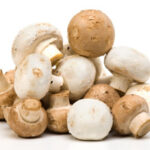Mushroom hunting maybe doesn’t sound like the most fun in the world, but then again just about anything is fun if you do it naked. I kid, of course, but mushroom hunting can be an interesting way to spend an odd day. And maybe that odd day will turn into an odd habit. Or, at the least, provide some delicious meals.
Know how many different species of mushrooms there are? Over 50,000. Some of them very definitely poisonous and worth staying away from. This article is going to assume that you aren’t going to eat anything you find that you don’t recognize before doing some research. All you’ll find in this article is what to take, where to go, and when to go for some mushroom hunting. Again, don’t eat anything you don’t recognize!
When? Well, mushrooms are available pretty much throughout the year. But if you want to actually eat what you find, then spring is best, though midsummer to late fall is right behind it. Autumn usually is considered the best time for mushroom hunting because of climate conditions. The sultry heat of the summer followed by rain provides the perfect humid conditions ideal for mushroom growth.
What kind of weather should you look for? You might think right after a rain would be the perfect time. But if you go right after a good hard rain, you’re probably just going to wind up with soggy fungi. Instead, wait a day or two, after the sun has had time to send it rays down and warm things up a bit.
What to take? A basket or some other carrying device made with a weave. You want to give the mushrooms access to air so they can breathe a bit. And don’t ever take mushrooms home in a plastic bag. Sealed plastic bags are an invitation for bacteria and increase the likelihood of your chances of contracting food poisoning. A knife, of course, but make sure it’s pretty sharp and not too large. You may need to clean the mushroom off a bit first-and don’t do it with water!-and you may want to cut the stems as you find them. Some sort of stick, like a cane or walking stick, is a nice addition. It will help you on hilly places for one thing and you can use it for digging in the dirt without having to bend over.
If you’re thinking about getting serious as a mushroom hunter, one key thing you’ll want to take is a notebook. It doesn’t have to be fancy, though as you get more and more into it, you might invest in a higher quality paper that isn’t as susceptible to the vagaries of weather. The notebook is for noting the location, soil type, landmarks, etc. If you find a particularly tasty mushroom and forget exactly where you found it, you’ll be sorry you didn’t take notes. Of course, a handy little digital camera will work the same, but it’s not quite as convenient for referring to.
Where? Avoid places with high growth. Surprisingly, perhaps, you also want to avoid places that are extra marshy. Most mushrooms thrive in warm, moist places, true, but not soaking wet. There are even some mushrooms that grow right out in open fields. These are kind of hard to miss: they look like little whitish footballs. But that sort of defeats one of the purposes of mushroom hunting, which is the thrill of the search. If you really want to get into this thing, go for the roadside fungi which takes a little adventurous huting and aren’t quite as obvious to the eye.
Although this paragraph could very well be the subject of an entirely different article, I suggest that you familiarize yourself on at least a rudimentary level with how to locate certain types of trees and tell the differences between them. Mushroom hunting will take you to deciduous trees such as maple and oak as well as conifers like pine trees. Mushrooms form symbiotic relationships with these kinds of trees. Mushrooms are not capable of obtaining energy through photosynthesis like most plants and therefore must draw sugar from tree roots. Rather than killing the tree, however, the mushroom supplies the tree with minerals. The more you familiarize yourself with these kinds of trees, the better because you’ll be running into them quite a bit.
Once you learn what you can eat and what you shouldn’t, you’ll want to take the mushrooms home and cook them as quickly as you can. However, even when you know the mushroom is edible, the first time you bring home a new species taste only a small amount because even though it isn’t poisonous, you may still be allergic to it.



